BLOG
|
|
THE FOUNDERS OF EVERWALK, DIANA NYAD AND BONNIE STOLL, sent an email to those of us who pledged to walk at least 3 times a week in support of their EVERwalk Nation Movement with a treat for readers. The two women shared a book list that include a “lofty” selection, Thoreau’s “Walking”, as well as “A Million Steps” by Kurt Koontz, “Wanderlust” by Rebecca Solnit, “Wild by Cheryl Strayed, and four other offerings for adults and children.
There are books lists for runners, and it seems fitting that walkers should also be encouraged to find motivation, humor, and fictional amusement in reading. hanks Diana and Bonnie! If you have not yet investigated EverWalk and made the pledge, here’s a link to that website. Training is underway for the second epic walk, EverWalk New England, which originates in Boston MA on September 10, 2017 and ends at Cape Elizabeth, ME on September 16. There are a number of ways to join the group. Choose from epic and less-than-epic efforts. See the WALKER RESOURCES page too for more supportive information. Runners, pass this link on to the reading walkers in your lives. RUN AND WALK HAPPY! http://mailchi.mp/everwalk.com/everwalk-summer-reading-list?e=c67e39eb7d http://everwalk.com
0 Comments
WEEK 10 RUN-WALK ACROSS AMERICA 2017 STARTS TOMORROW
Segment 24: West Union IA to Boscobel WI Segment 25: Boscobel WI to Madison WI Segment 26: Madison WI to Milwaukee WI WOW! ON THE FIRST DAY OF THIS WEEK’S SEGMENT WE CROSS THE MIGHTY MISSISSIPPI RIVER. Even virtually it seems like a really big deal. Notice, when leaving Iowa, that both it’s western and eastern borders are formed by rivers, the Missouri and Mississippi Rivers, respectively. Iowa is the only state with this distinction. The National Geographic Society website has a student activity for grades 6-8, in which students examine the role of rivers in the settlement of the Americas; if your kids are walking or running this challenge, it might be worth exploring as a learning activity. Moving into Wisconsin the route follows along the Wisconsin River, a tributary of the Mississippi and the longest in the state. Apparently there are bald eagles to be seen along the northern Mississippi River valley, between Minnesota and southern Illinois, but mostly in the months of January and February. The rest of the week runners will travel across Wisconsin to it’s two largest cities. The first stop is Madison, the state’s capital, named after President James Madison, home of the University of Wisconsin, and second largest city. Milwaukee, the largest city is next. According to the TrekTravel.com online itinerary for its bike tour (week 4, day 28), the route to Madison from Boscobel WI takes you through a beautiful ‘unglaciated region” of Wisconsin’s Driftless Area, where you experience steep and rolling forested hills, green valleys, and crystal clear trout streams that have dramatically carved limestone bluffs. It says that nearby farms, which use sustainable growing practices, produce organic foods and other treasures like heirloom vegetables and artisanal cheeses likely to be found in Madison restaurants and its farmers market. Part of the company’s admitted enthusiasm for this city is due to the fact that Madison is TrekTravel’s hometown, which explains the wonderful insight into the area's charms. Milwaukee is at the eastern edge of the route through this state and offers up scenes of the Lake Michigan western shoreline and the Brewers’ baseball team stadium, Miller Park. It is the home of iconic Harley-Davidson motorcycles and its landmark-building-housed Museum. There is much to see and enjoy here. Get ready to cross the Big Lake next week! RUN HAPPY! Check out the images on the ACROSS AMERICA IN PHOTOS page. http://nationalgeographic.org/activity/rivers-of-americas/ https://en.wikipedia.org/wiki/Wisconsin_River http://www.baldeagleinfo.com/eagle/eagle1.html https://en.wikipedia.org/wiki/Madison,_Wisconsin http://trektravel.com/trip/cross-country-usa-bike-tour/ http://www.harley-davidson.com/content/h-d/en_US/home/museum/visit/visitor-information.html http://milwaukee.brewers.mlb.com/mil/ballpark/ Bring Back The Mile (BBTM) is a movement with a mission to re-instate the Mile as the “premier event in the sport” and boost interest in and coverage by media of the Mile “for those who love the distance as well as the general public.” BBTM website materials make the case for the Mile as a “storied distance”.
Others on the BBTM bandwagon say it’s America’s classic distance. Here in the US all people know what a mile is, and as US runners we measure distances and speeds using this unit rather than meters, they proclaim. BBTM founder Ryan Lamppa, also one of the founders of Running USA, started EVENTPRO, a media and marketing company in 1997. It was EVENTPRO that launched the BBTH movement in 2012. Returning the Mile to the list of high school track and field meet events in place of the1600 meter race is one of the stated purposes of this organization. Once upon a time in America it was THE race, but BBMT says changes in track construction practices in the 1980’s led to the creation of 400 meter rather than 440 yard ovals. Thus, instead of running 4 laps and covering a mile, this number of revolutions on the track now cover 1600 meters, about 9 yards shy of a full mile (1609 yards). Mile races are contested in only a few official HS State Meets. There’s history behind The Mile, and bringing it back might increase interest in track and field as a sport in general. Here’s a quick history quiz to see if you GET the Mile. Fill in the blank: 1. Englishman Roger Bannister was the first human to run a sub-4 minute____. 2. Jim Ryun was the first American high schooler to run a sub-4-minute____. 3. The distance race that fictional character Quentin Cassidy of the novel “Once a Runner” specialized in was the ____. 4. War hero Louis Zamperini whose life was chronicled in the movie “Unbroken” was a US champion who set a national collegiate ____ record in 1938 that held for fifteen years, earning him the nickname "Torrance Tornado". 5. Counter-factual question: from memory, name a famous 1600-meter racer or quote a line from any source that includes “1600 meter”. (1-4. ANSWERS: all "mile") Seems like the SUMMER is ideal for recording-beating outdoor Mile races. Did you know this? According to the website BBMT “July is the month with the most outdoor Mile world records set with 15 (13 men’s and 2 women’s); August is second with 11 (7 men’s and 4 women’s).” It appears that US track fanatics and elites love the lore and magic of the Mile; but, IS THE MILE RACE FOR YOU and other recreational runners? Taking a look at the type of training that could be involved in preparing for a Mile race might help settle the question. Mario Fraioli created an 8-week plan that can be downloaded free from the link in the article. Plan summary:
For health- and shape-conscious runners, training for a mile run seems to be perfect. HIIT sessions predominate, there’s adequate opportunity to cross-train and rest, and time spent pounding the pavement in any one workout is limited. It’s likely that regular runners who want to join the fun of a Mile race will forgo formal training and “just do it” as the Nike ad says. RunningUSA.org REPORTS THAT THE NUMBER OF PATRTICIPANTS IN RACES one mile in distance (“the Mile”) has “continued to rise” with roughly 149,000 crossing the finish line last year. The number of mile events also increased in 2016 (1,530) but did not surpass the record tally established in 2014 (1,800) in the United States. The largest was identified as the New Balance Fifth Avenue Mile with 6,148 finishers. In distant second place with 3,737 finishers is Virginia Beach VA, Yuengling Shamrock Operation Smile Final Mile, part of the Shamrock Marathon event. The remaining 8 are presented in a table in the Running USA article. Because race numbers are still relatively low, registration for these races may not close out months in advance. Spur of the moment sign-ups mean spontaneous fun is still possible. Ryan Wood compiled a list of “7 Must-Do Mile Road Races” in an article for Competitor.com. It includes the NYC 5th Avenue Mile. Also, the Twin Cities Medtronic TC 1 Mile and Grand Blue Mile; both hosted the USATF Mile Championships. The Macklind Mile by Smoothie King in St. Louis MO is a bit quirkier, offering 6 separate races including a Dog Mile, with separate registration for pooches. The Londonderry NH Millennium Mile is run on January 1 morning, a bracing way to kick off a New Year. Destination races on the list are the Hoka One One State Street Mile in Santa Barbara CA, the Boulder CO Pearl Street Mile, and the Encinitas Mile, near San Diego CA. Earned Runs thinks BBTM is on to something good for American running. There’s history, tradition, fun, spontaneity, and manageable training involved in running the Mile as non-professionals. If excitement for this distance builds among recreational runners media coverage of national high school, collegiate and elite events may increase and with it the quality of the competitive field at each level. Like golfers and tennis players, runners could enjoy watching our sport’s heroes as they ascend to the rank of champion. Shaking things up in the running world might be exactly what’s needed to get more people moving and away from electronic devices. Rather than striving to post a video watched by millions we might want to take on 1609 yards, very fast. RUN HAPPY! http://bringbackthemile.com http://www.runningusa.org/mile http://running.competitor.com/2015/09/photos/7-must-do-mile-road-races_135255 http://running.competitor.com/2012/04/training/blueprint-master-the-mile_30069 http://running.competitor.com/2015/09/news/how-a-mile-race-can-help-boost-enthusiasm-in-running_135024 JUST FOR FUN ARTICLE ABOUT THE MILE https://www.theatlantic.com/entertainment/archive/2014/02/the-unsung-glory-of-the-mile-run/283869/ DEEP DIVE INTO ANTI-AGING RESEARCH In an article for Under Armor’s MyFitnessPal.com blog, “Can You Guess the Best Workout for Anti-Aging?”, author Jodi Helmer begins by reminding readers that inevitably our bodies change with age; “cell function decreases, bones lose density, joints show signs of wear and muscle tissue and strength decrease while body fat increases”. She goes on to provide advice from trainers and to summarize a few of the results of a Mayo Clinic research study, about the effects of different exercise training modes in old and young.
Helmer’s piece is very readable and helpful. If you want to delve much deeper into the science, Earned Runs has provided more information and some interpretation, below, on the details of this study recently published in the journal Cell Metabolism. The publication is “Enhanced Protein Translation Underlies Improved Metabolic and Physical Adaptations to Different Exercise Training Modes in Young and Old” by Matthew M Robinson M.D. and colleagues. In two age groups of men and women, young (18-30 years) and older (65-80 years) this study compared the effects of 12 weeks of training by 3 different exercise modes supervised by an exercise physiologist: 1) Aerobic high intensity interval training (HIIT) (HIIT cycling 3 days/week, > 90% VO2peak + steady walking 2 days/week, 70% VO2peak) 2) Strength resistance training (RT) at high intensity (upper body and lower body, 60 minutes each day, total 4 days/week), 3) Combination training (CT) of aerobic and weight training, both at moderate intensity (12 weeks of NO activity, then 12 weeks with steady cycling 5 days/week, 70% VO2 peak + upper and lower body weight training, 30 minutes each day, 4 days/week) The research involved participants who were NOT regular exercisers prior to entering the study. They were non-smokers and had no metabolic, heart, kidney, or vascular diseases, and were not obese. The number of participants who completed all the requirements of the study was small in each exercise group, from 7-11. Testing was performed at baseline (before) and after the 12-week exercise periods in the HIIT and RT groups; in the CT group, some baseline testing was performed before and after the initial 12-week period of inactivity, and then after the 12-week exercise period. Some test results:
Gene expression change (from muscle biopsy):
That’s a load of information! What is noteworthy about this study, and what do the results mean in terms of the ability of exercise type to counteract the effects of aging? - The number of studied subjects was small. The details of race and ethnicity were not given, but with so few people there’s no guarantee the findings apply to everyone. - Women and men were included. Studies often involve only men or only women. In the older group, all the women were post-menopause. This is the time of life when bone density and muscle mass decline significantly. - Study results show some things we already suspected: --- Strength training performed at higher intensity is best for increasing fat free muscle mass and strength, and for increasing the sensitivity of the body to insulin, which helps prevent diabetes. --- HIIT is best for calorie burning and increasing aerobic capacity, and assists with insulin sensitivity. HIIT doesn’t work as well to make muscle bigger or stronger, but it does work. - Study results revealed some NEW information: --- Exercise training did not seem to reverse all age-related declines in muscle gene expression --- A “universal set” of muscle genes was upregulated (or boosted) by the 3 exercise modes in both age groups and this boost likely contributes to heart and blood vessel health. --- HIIT induced the largest number of muscle gene expression changes in both age groups, but the effect was greatest in the older group and may be specific to older folks. - Potential good news for runners and walkers: the HIIT group had 5 days of workouts that included 2 sessions walking steadily (not intervals) on a treadmill for 45 minutes at 70% effort (VO2peak). It seems that 3 days of HIIT in which the greatest interval effort was cycling 4 minutes at >90%VO2peak followed by 3 minutes of low effort is enough to generate HIIT benefits. Beyond those 3 days, walking at a higher intensity can be enjoyed by who wish to save their legs for running HIIT (speed intervals) or steady brisk walking. - The study authors concluded that “supervised” HIIT seems to be an effective exercise mode to improve aspects of aging that relate to the health of our blood vessels and heart, and to metabolism (diabetes prevention). --- Because the CT exercise mode (combination of moderate intensity aerobic and strength training) did not seem to produce results as good as aerobic HIIT alone, the researchers are indicating that high intensity is more beneficial than lower intensity aerobic exercise. The comment emphasizes that exercise must be performed at this higher intensity level to generate the greatest anti-aging benefit, and that the direction of a trainer may be necessary to sustain interval exercise at this very high level. Whew. This might have been too much science for some, but examining research closely allows us to learn more than what’s in brief media releases. SUMMARY:
RUN HAPPY! http://blog.myfitnesspal.com/can-guess-best-workout-anti-aging http://www.cell.com/cell-metabolism/fulltext/S1550-4131(17)30099-2 https://www.ncbi.nlm.nih.gov/pubmed/19949277 PSYCHOLOGICAL EFFECTS OF INJURY
In the April 2106 Runner’s World article, “5 Steps for Coping with the Psychological Effects of Injuries”, author Ashley Rodriguez uses the example of US Olympian marathoner Jordan Hasay to discuss the mental and emotional aspects of recovery from injury. The insights of sports and performance psychologists are employed to address the issue. While elite distance runners and other professional athletes may readily turn to top health professionals for assistance, amateurs and health-seekers do not have such opportunities. Rodriguez’s piece allows us to benefit from advice given to the pros. In summary, the expert advice is:
However, there are several other concerns not discussed by Rodriguez’s article that don’t involve running performance. In my opinion, there are 3 issues that worry the less-than-elite everyday exerciser in recovery. 1) Weight control: Many runners fear that not being able to run will lead to weight gain; it is a common reason to start running! How to avoid the slow accumulation of pounds over 2-6 weeks or several months or more of rest? My experience has been that cutting back on calorie intake is a MUST, and that prescribed STRENGTH training as part of rehabilitation is the greatest protection against weight gain. Strength exercises performed daily per medical advice will burn calories, boost metabolism, and sculpt muscles. Depending on the type of injury incurred, cross-training activities can substitute for running, if care is taken not to over-train 2) Health: The inability to run for aerobic exercise is a concern. The perception might be that this health-conscious group tends to be a bit older, but I know youngsters in their teens and above who fear being inactive. Once again depending on the injury, cross-training by swimming, cycling, rowing, or elliptical use can save the day. However, we come to learn most acutely how upper body and core movements are connected to those of the lower body when exercises that don’t predominantly rely on legs become difficult to perform in this situation. 3) Social losses: It’s fairly obvious that not being able to join a daily morning running or walking group or weekend long-slow-run gang because of an injury will affect socializing. Not being able to easily walk because of a sore knee or hip can cut short a shopping trip to the mall, or prevent playing recreational league sports or joining sightseeing excursions on vacation. The temptation is to participate and carry on as if the injury did not exist, but potentially aggravate it. Guilty. Doing so prolonged my recovery period; lesson learned. The best personal advice I have is to take a pass on the activity or significantly scale down efforts and anticipate needing to take breaks. Check with others involved if they’re okay with your limited participation. Plan regular rest periods. Bring along treatment aids, such as a cold pack for comfort, a band to stretch, a tennis ball for massage. Best strategy for a shorter, successful recovery is to stay on the sidelines as much as possible. My opinion piece doesn’t presume to provide psychological help. It acknowledges my struggles during periods of mild injury rehabilitation. The thoughtful and informed advice given by the Runners World article does this. RUN HAPPY! http://www.runnersworld.com/psychology/5-steps-for-coping-with-the-psychological-effects-of-injuries YOGA POSES FOR UPPER BODY SPORTS Runners and walkers know that performing post-exercise stretches will help with maintaining flexibility and ward off imbalances that foster injury. Those who also enjoy playing sports involving use of the upper body might be interesting in the article “Stretches for Golf-Tennis-Baseball: 5-Pose Yoga Fix” by Kelly DiNardo for Under Armor’s MyFitnessPal blog. According to the credits, DiNardo has been a yoga instructor since 2002 and has a studio in Washington DC.
She says, “Athletes who swing a golf club, baseball bat or tennis racket really twist and turn their bodies.” The article offers 5 poses that the author indicates will build shoulder strength and flexibility, keep the body in alignment, increase spinal movement, open the hips, and loosen the hamstrings. These benefits would also seem to help with running! The poses are described in text and demonstrated in pictures, which show them to be markedly different from the usual passive lower body stretches recommended for runners. Because performing a variety of exercises is generally considered a good approach to increasing functional strength, it would seem that expanding the number and type of stretches would be a similarly positive approach to improving flexibility. It’s exciting to have these new moves to try, although some may be quite challenging. Excellent lower body flexibility seems to be required.
Hopefully it’s possible to ease into these moves. Taking a beginner class might be the best way to safely introduce them into a fitness program. Yoga enthusiasts, please weigh in the best approach. This link will be added to the website RESOURCES page. RUN HAPPY! http://blog.myfitnesspal.com/stretches-golf-tennis-baseball-5-pose-yoga-fix/ UNIQUE GEAR Emily Polacheck assembled a handful of interesting products that runners could find useful, or even indispensable, in her article for Competitor.com in April 2015. “5 Unique Inventions Geared Toward Runners”. This article was Tweeted to the running magazine’s followers again earlier this summer. All the links in the article are active and take you to a company site. Check out the information Polachek proves on the following:
1. Night Runner Shoe Lights (~$60) 2. Volvo LifePaint (13/20 British pounds with shipping/handling; not sure it can be mailed outside UK) 3. LifeStraw (~$20) 4. Snapbuds (~$10) 5. RollRecovery R8 ($119) Personally, I think the LifePaint could be very useful for runners, and an ideal tool for parents hoping to keep children safe at low light hours. I would consider a purchase. Reflective clothing is quite expensive and LifePaint would change the affordability equation. The LifeStraw has potential as a survival tool to be kept in a car or in a first aid box on trips if back-country hiking or ultra-running are not recreational pastimes. At the very least one or more of these items could make a great gift to a fitness enthusiast who is tough to please. RUN HAPPY! http://running.competitor.com/2015/04/video/5-unique-inventions-geared-toward-runners_125992 WOW! CHECK OUT WHO’S RUNNING THE 40th CHICAGO MARATHON
This Competitor.com article tells us who has signed on to run the October 8, 2017 race. Olympic runners Jordan Hasay and Galen Rupp are headliners! Another reason to line up along the sidelines as a spectator if you’re not running, is that the legendary Joan Benoit Samuelson will compete and hope to set an age group world record. Benoit Samuelson rewarded the host-country Americans by finishing first in the first Women’s Olympic Marathon race in Los Angeles in 1984 and taking the gold medal. It will be crowded on the course and off. The article says the race hosts more than 40,000 competitors and is estimated to draw about 1.7 million spectators. The history of marathon racing in Chicago is provided in a Wikipedia entry. Although this year’s race is billed as the 40th, it’s considered part of the “modern” era marathons in the city that began in 1977. The first Chicago Marathon was held in 1905, with 20 registered runners. Fifteen ran the race and only 7 finished! Want to get involved in the excitement as a participant? The possibility for a marathon registration is non-existent for 2017. Registration opened October 25 and closed November 29, 2017. According to an earlier Competitor.com article there was a system of guaranteed entry options as well as a non-guaranteed entry drawing that opened November 1. Runners in the drawing were to be notified of their status on December 13. Keep this in mind if you become inspired to enter the 2018 race. There’s a 5K race for which registration remains open as of the time this post was written. Finding hotel accommodations will be a challenge, however. Staying with friends or family in the area could be the wisest option. Available rooms might be found farther outside the city, which requires securing transportation to the start area well in advance of race time. Wisest advice for spectating or running any of the events in 2018:: begin planning very early! RUN HAPPY! http://running.competitor.com/2017/07/news/hasay-rupp-chicago-marathon_166401 https://en.wikipedia.org/wiki/Chicago_Marathon http://running.competitor.com/2016/10/news/registration-40th-anniversary-chicago-marathon-2017-begins-oct-25_157057 https://www.chicagomarathon.com https://en.wikipedia.org/wiki/Joan_Benoit WEEK 9 RUN-WALK ACROSS AMERICA STARTS TOMORROW
Segment 21: Sioux Falls SD to Okoboji IA Segment 22: Okoboji IA to Clear Lake IA Segment 23: Clear Lake IA to West Union IA The travel route on the first day this week takes runners through the corners of three states: southeastern South Dakota, southwestern Minnesota, and northwestern Iowa. The following two days will be spent crossing, west to east, the gently rolling hills and cornfields of Iowa. Vacation spot Okoboji is the first stop on this leg of the trip that will end at the west coast of Lake Michigan, one of the Great Lakes. Interestingly Okoboji sits between two lakes, West Okoboji Lake and East Okoboji Lake, which are part of a chain of five ‘glacier carved lakes’ known locally as the “Iowa Great Lakes”. The chain of lakes, which also include Spirit Lake, the largest, and Upper Gar, Lower Gar, and Minnewashta extend southward from the Minnesota border. According to the VacationOkoboji.com website, “spring-fed West Lake Okoboji is a beautiful shade of blue” and is the “centerpiece” of the lakes and the communities that surround them. The mid-week destination, Clear Lake IA, is another vacation-tourism stop in Iowa because of its location on the shores of the large lake for which it is named. The Surf Ballroom near this town is famous as the last gig that Buddy Holly, Richie Valens, and The Big Bopper played before boarding the small private plane that crashed and made sad rock and roll history on February 3, 1958. The Ballroom still has concerts and has a Holly tribute show every February. The route to West Union IA from Clear Lake takes runners and walkers through more rolling hills and cornfields, as might be expected in one of the states considered to form “America’s Heartland”. Did you know its wind farms perform enough work to lead the nation in wind power generation? The charts in a Wikipedia item on the subject show power production is at lowest levels in the summer months. There is much more than agriculture in Iowa, however on this trip you will see mostly beautiful farmland, quaint towns, and of course, the lakes. I searched the internet for information on Iowa as part of the Great Plains, and learned that the definition of this region varies by source and that the “Midwest”, “Plains States”, and “Great Plains” are not synonymous designations of the same geographic areas. As proclaimed every week, our online ‘exploration’ of the virtual route segments traveled on this trip merely scratches the surface of what there is to discover, I am eager to travel through these areas in real time. America is SO BEAUTIFUL. I’m convinced that nearly every local humble 5K race along the route could be a memorable experience. RUN HAPPY! http://vacationokoboji.com/ https://en.wikipedia.org/wiki/Clear_Lake,_Iowa https://en.wikipedia.org/wiki/Wind_power_in_Iowa https://en.wikipedia.org/wiki/Great_Plains https://www.reference.com/geography/states-make-up-great-plains-e8100d6eec1f872 http://www.city-data.com/forum/general-u-s/1426323-great-plains-region-differences-midwest.html SUMMER CHALLENGE III: FASTEST 5K OR SUMMER-FULL-OF-FUN 5K’S
If you need a boost to your resolve to train to run a fastest 5K or schedule a bunch of fun 5K’s, there’s a slideshow article that will help. “10 Reasons Why Your Next Race Should Be A 5k” by Megan Harrington is a quick series of clicks through enough encouraging justifications that doubts about meeting this challenge might be erased. She does a terrific job in explaining why this is a perfect summer “reach” activity. Take a few minutes to check out her piece. If you want to spend ZERO FUNDS on race registrations for this challenge, request FREE Earned Runs BIBS and start designing custom events for July, August, and early September. Instruct friends/family to do the same if you want company. RUN HAPPY! http://www.active.com/running/articles/10-reasons-why-your-next-race-should-be-a-5k http://www.earned-runs.com/request-bibscontact.html SELF-MASSAGE FOR DIFFICULT TO REACH BACK-OF-THE-KNEE AREA
For runners with tightness at the back of the knee, just in the upper outer/lateral body of the calf muscle but below the joint that doesn’t seem to respond to the usual stretches and foam rolling, perhaps this video will help. The massage demonstrated in it targets the popliteus muscle, which is deep and often difficult to isolate with self-massage techniques. If you drive or sit with a computer on your lap for extended periods, or must walk up stairs quite a bit like I do, you might be experiencing this tightness. I did not seek a proper diagnosis from a physical therapist or physician for this relatively mild but recurrent problem, and can’t say with certainty that popliteus muscle strain is the source of my discomfort. However, this lacrosse ball roll-out was able to provide a great massage in the area that was tender and a bit of relief almost immediately. The leg/knee/calf still must to be rested a few days (no running/intense walking until back to 100% function), so daily strength training will be substituted as well as the massaging. Afterward, I realized that this high outer calf area wasn’t being reached with the usual foam roll and passive stretching moves. Because tightness flares up after a lengthy drive or laptop session, and with running up and down stairs (not for training but housework) I’m happy to have found a massage method to keep in my ‘toolbox’ to use routinely on both legs after recovery. Caution: ONLY MUSCLE bodies should be massaged, not the joint space. If you have significant discomfort and decreased function in a knee, seek medical advice. Making a self-diagnosis of a serious problem and attempting to treat it can worsen the situation and lengthen and complicate your recovery. Trainers or coaches please comment. RUN HAPPY! Posterior Knee Massage: Pain and Mobility (popliteus) by Activ Chiropractic https://www.youtube.com/watch?v=0t03rzBn8lo AN ARTICLE IN COMPETITOR.COM INTRODUCES us to a new lacing system that promises to provide a better fitting shoe for many runners. The company BOA has partnered with shoe manufacturers, like New Balance, ASICS and Under Armor, which have incorporated its BOA FitSystem into new models that offer other improvements as well. The article-story by Kevin Gemmell describes a visit to the Denver-based BOA factory that helped in learning more about the process that brought the NEW BALANCE product to market.
Another article showcases 3 shoes, including the New Balance FuelCore Sonic with BOA system as well as the Arc’Teryx Norvan VT (for mountain running and rock climbing) and the Puma Speed Ignite NETFIT, all offering custom fit options. Each of the shoes has a great look! The science, physics, engineering, and art/design aspects of creating such products demonstrate that a career in the sports industry is not something only athletes should consider. There's now an organization that helps women who wish to become part of this business. RUN HAPPY! http://running.competitor.com/2017/06/news/boa-dial-lacing-system-popular-running-shoe-brands_165680 https://www.theboasystem.com http://running.competitor.com/2017/07/shoes-and-gear/3-shoes-offer-custom-fit-options_165829 http://www.sportsengineering.org/students/how-to-be-a-sports-engineer/ http://www.fabsportsorg.comwww.fabsportsorg.com https://www.youtube.com/watch?v=2WyqeB8CJmk ASKING FOR AND DECLINING CHARITABLE DONATIONS GUIDE
Theresa Juva-Brown wrote an article that may be helpful if you’re on either end of an appeal for donations for a charity race. “Charitable Race Donations: How to Politely Ask (and Decline)” has this advice for those making the pitch to others to give: be selective, take care with your words, place limits on your requests. For those who wish to opt out of giving, she suggests doing so gently and with understanding of the courage it takes to ask. Her article has much more depth to it than this brief summary and it provides insights that may change your approach to ether action. Earned Runs offers other considerations for runners participating in a charity event: 1) Investigate the non-profit organization behind the race before you register and have some figures to show potential donors that their money will be well spent, if you are convinced it is as well. Check out Charitynavigator.org. 2) Be prepared to disclose the level of your commitment. It should be sufficiently high to demonstrate that in addition to being personally fun, it’s something you are willing to support with a significant donation as well. 3) Evaluate the race experience afterward from the perspective of a donor as well as a runner. Luxuries should be kept to a minimum if the majority of the funds are to be directed toward supporting the mission. The purpose of a races might be to raise awareness, so the bigger the event greater the awareness. But expenses that don’t contribute to operations and safety should be held in check. Be wary of races that provide too many goodies. Provide feedback if you think a favorite charity race is taking advantage of your ability to raise money. 4) If you are a repeat participant-petitioner think about asking “small”. The grocery stores ask for $1 donations at check-out. If you keep the request small but ask a multitude of people it may not generate hard feelings. Repeat donors may not feel abused if each time you make a request that it is $1 or even less! 5) Remember that you can personally donate to a charity each time you use a FREE Earned Runs bib in a custom race designed on your terms. You avoid paying a registration fee, which enables gifting a worthy cause. See the GENEROSITY page for more information. Be knowledgeable, courteous, and generous in spirit whether asking or asked to support a cause. RUN HAPPY! http://running.competitor.com/2017/07/races/charitable-race-donations-ask-decline_161564 https://www.charitynavigator.org LISTEN TO YOUR BODY TO TRAIN TO BE A BETTER RUNNER. That’s what all the gadgets claim to allow us to do, says Adam W. Chase in his article “This May Make You Rethink Training with So Many Gadgets” for Competitor.com. Can we do this without the gadgets? YES. Many of the top coaches and trainer advise us to ‘run by feel’. So why do runners favor using devices that provide warehouses full of data instantly?
Ask yourself this question and the answer will likely be similar to that of other runners. My answer: I don’t trust myself to do it well AND I’m a bit lazy. I want it done for me. I don’t have a human coach to urge me to pick up the pace, run another speed interval set, or ignore the rain. The voice in my head might indicate it’s okay to slack off on a tempo run or skip a strength session after a run. The next best solution is a device in my hand (phone). For others, it might be on a wrist, in an ear, or on a shoe. Chase reports that there is “a new wearable that measures your heart rate through ear-mounted biosensors and uses artificial intelligence to analyze the data and then coax you through your run via high-end earbuds and a soft, feminine voice.” ThE collection and analysis of biological data in real-time means that interpretation of results can be communicated to a runner almost immediately. We monitor the display screen or listen to a voice as we run. The downside:
The BASIC equipment needed to run by feel, from personal experience gained after deleting my phone running tracker, are:
Runners who need to be convinced to wean off gadgets after reading this article, should go for an important training run with a phone almost out of charge or in an area without a cell signal. Or in the middle of a run mimic accidentally resetting or deleting the session. Imagine this situation will be long term. It’s what changed my mind about the wisdom of relying on gadgets for training. RUN HAPPY! http://running.competitor.com/2017/07/shoes-and-gear/rethink-training-with-gadgets_165811 STRENGTHEN UPPER AND LOWER BODY WITH BAND WORK. If you don’t often work on upper body strength and flexibility but think you should, check out the set of moves demonstrated in the article “8 Muscle-Shaking Barre Exercises You Can Do with An Exercise Band” by Sarah Angle for SHAPE.com.
Five of the 8 exercises work the arms and upper torso with resistance band ‘equipment’ physical therapists use (TheraBand is the only brand I’ve used for this reason). There are a couple of lower body “bread-and-butter” exercises that help strengthen hip muscles to stabilize forward running movement and limit lateral wobbling. The demonstration shows the model using small circular bands (lovingly known as “booty” bands), but you can just as easily make a smaller band by tying the “ends together so that it forms a circle, about one foot in diameter” These bands are pack-able for travel in a suitcase, and can serve this function at home and work. See them on the GEAR LOVE page. Try performing a few of these exercises every other day, while you watch TV! RUN HAPPY! http://www.shape.com/fitness/workouts/8-muscle-shaking-barre-exercises-you-can-do-resistance-bands |
BRIDGE TO PHYSICAL SELF
Running, walking, and fitness activities enable us to experience our physical selves in a world mostly accessed through use of fingers on a mobile device. AuthorEARNED RUNS is edited and authored by me, runner and founder. In 1978 I began participating in 10K road races before 5Ks were common. I've been a dietitian, practiced and taught clinical pathology, and been involved with research that utilized pathology. I am fascinated with understanding the origins of disease as well as health and longevity. Archives
November 2023
CategoriesNew! Search Box
Earned Runs is now searchable! Check it out...
|
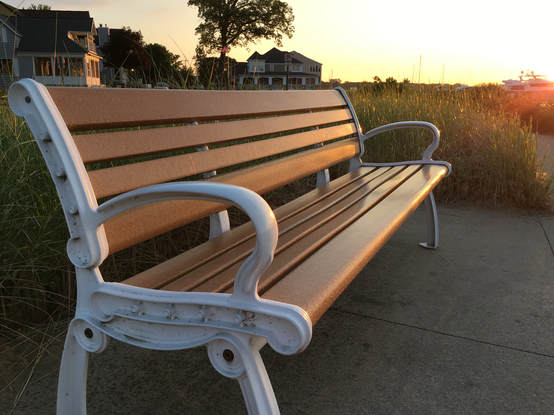
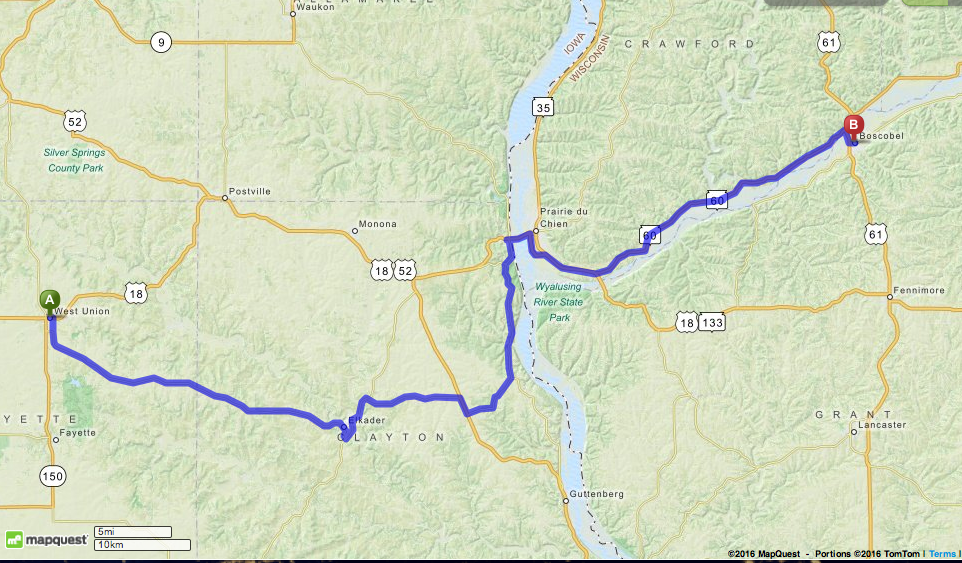
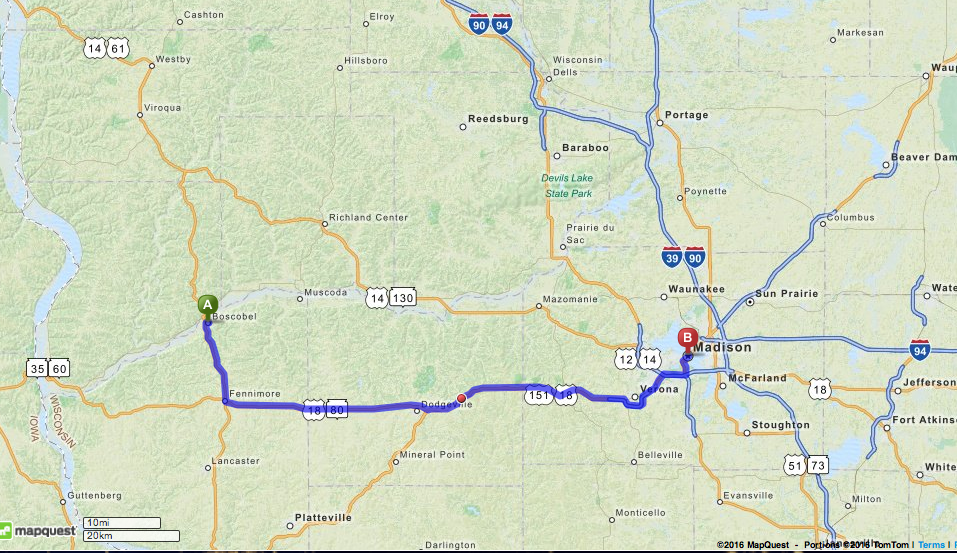
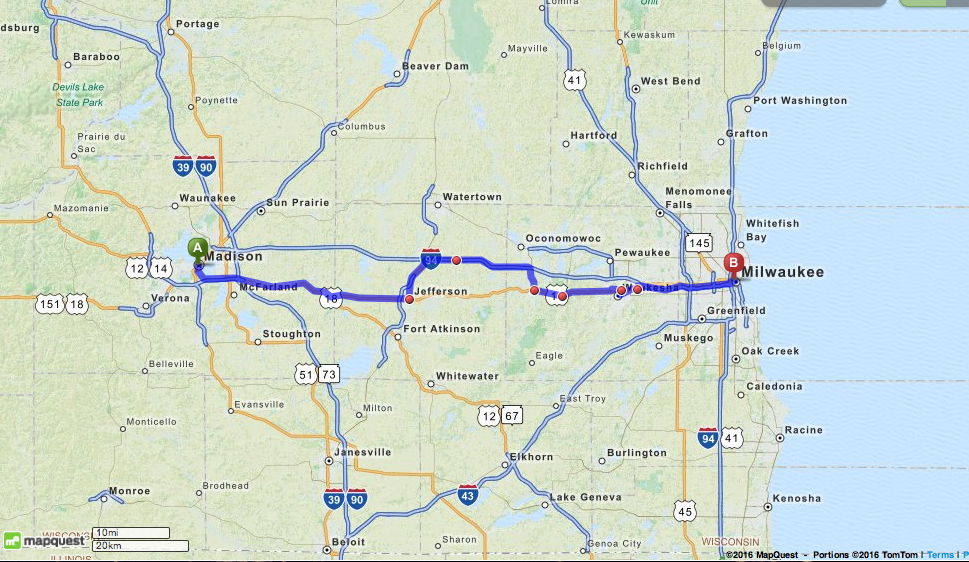
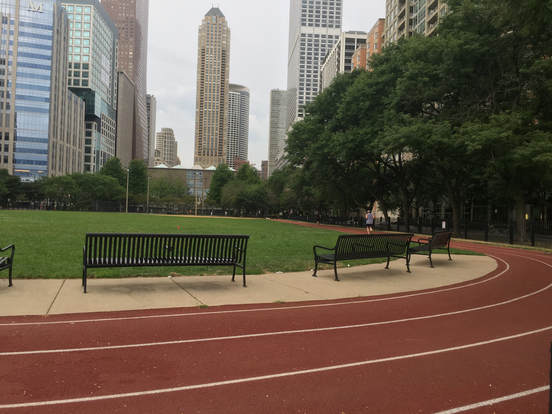
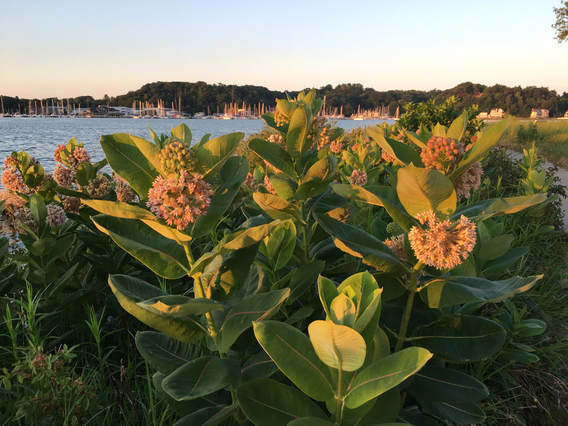
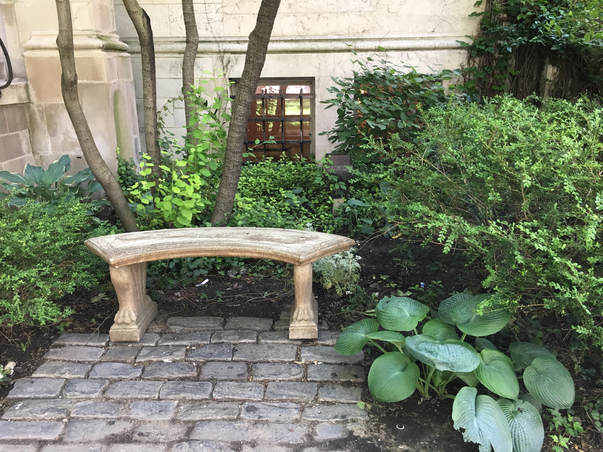
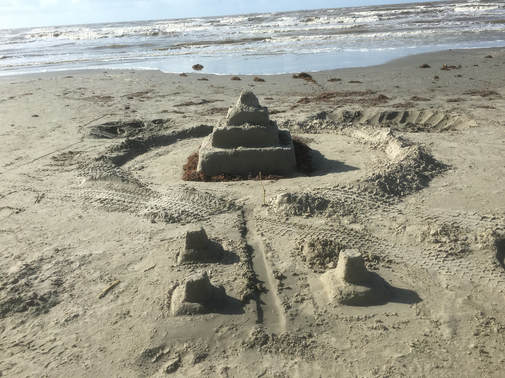
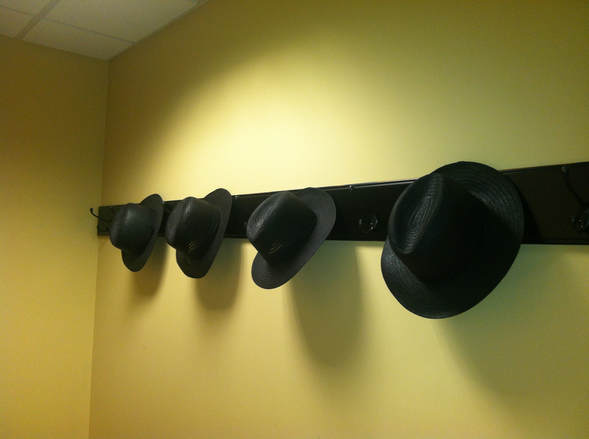
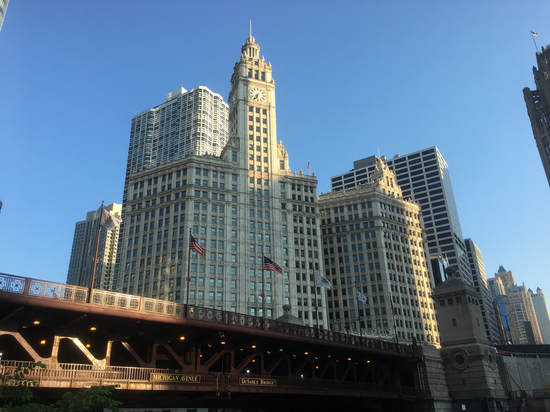
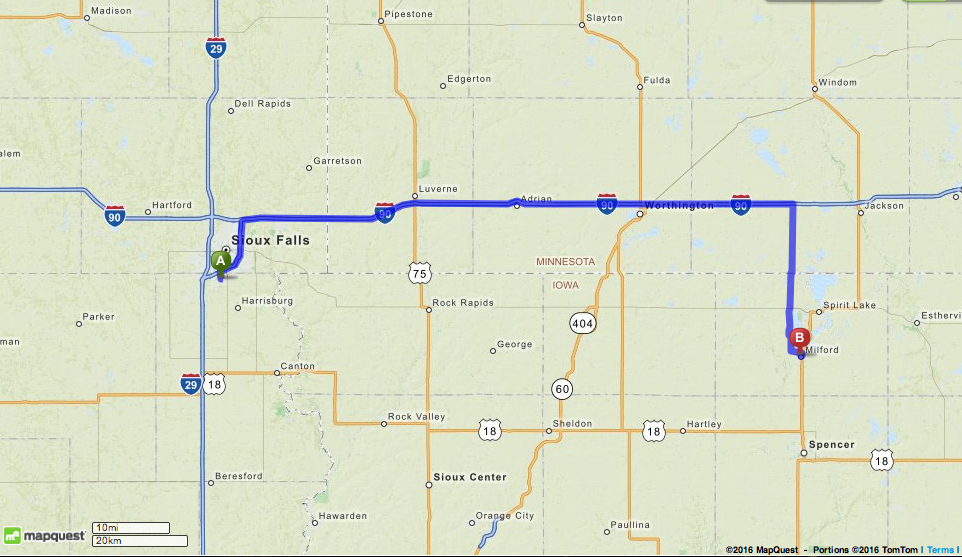
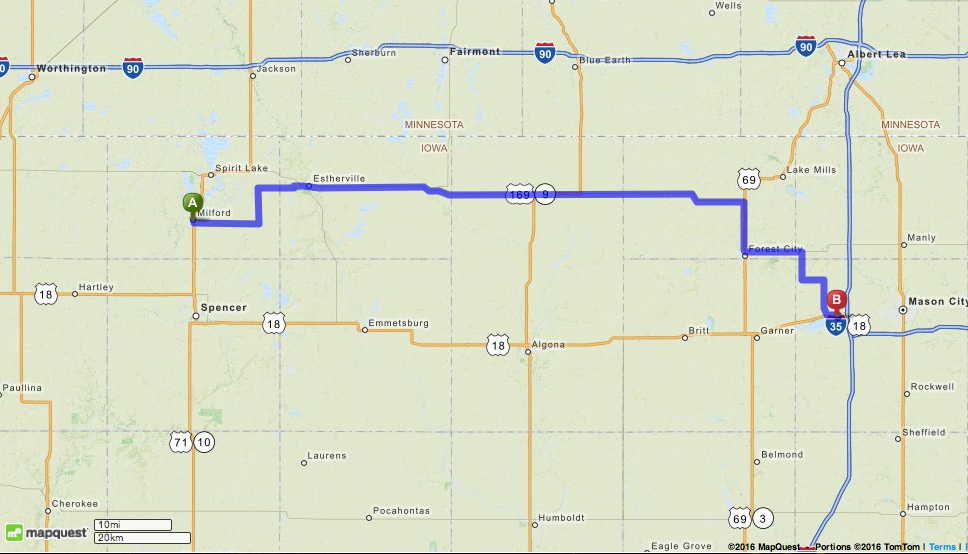
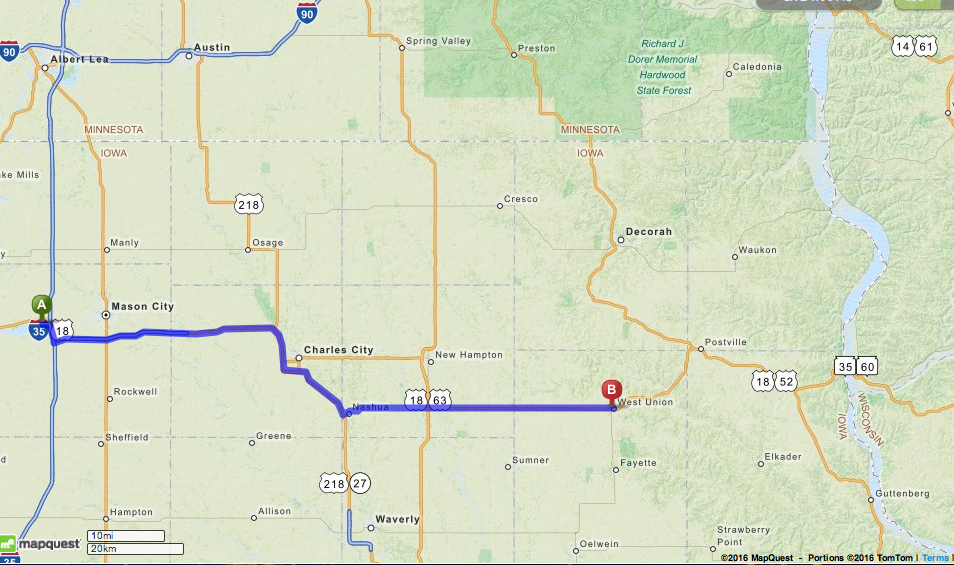
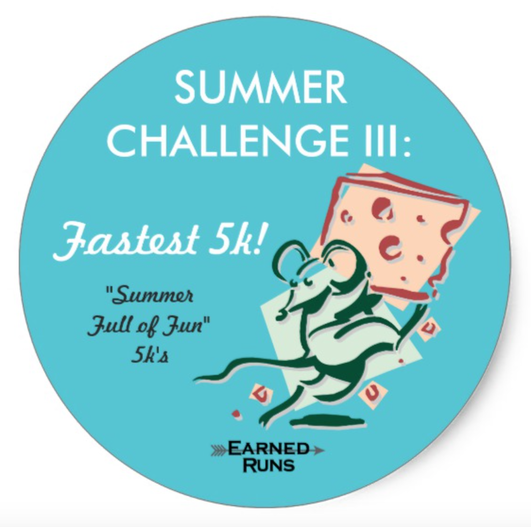
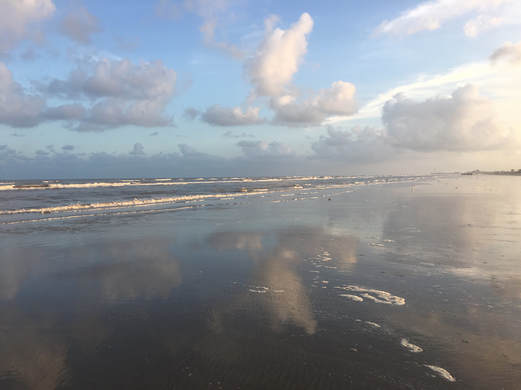
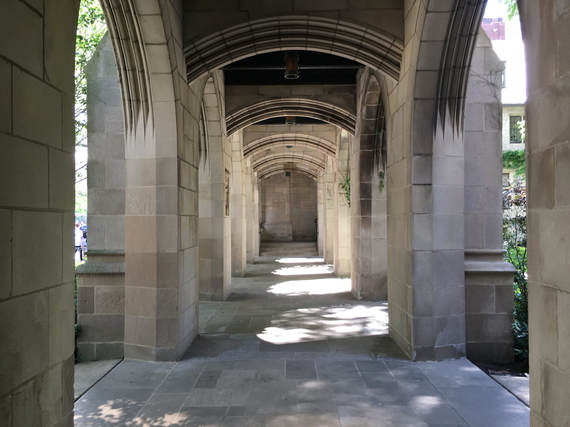
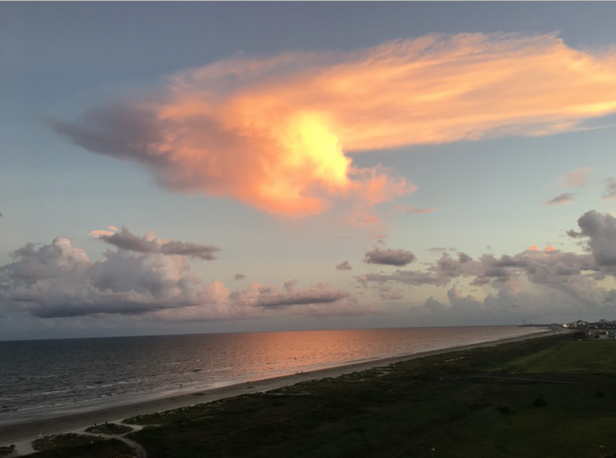
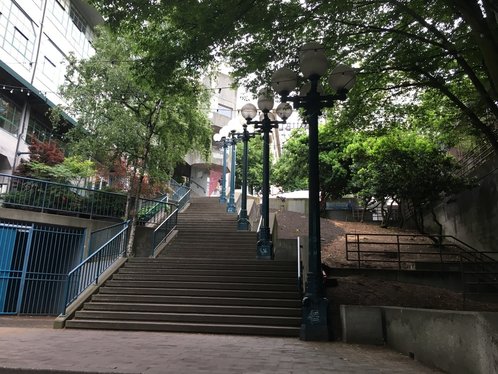
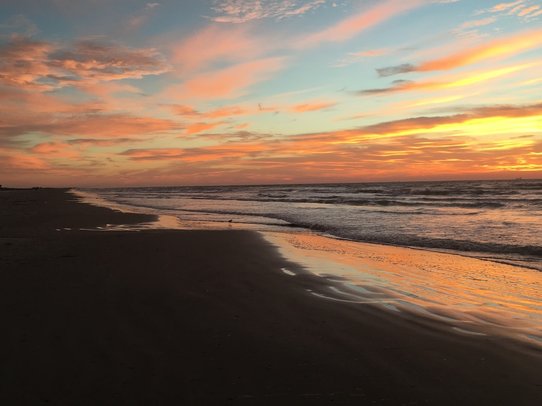
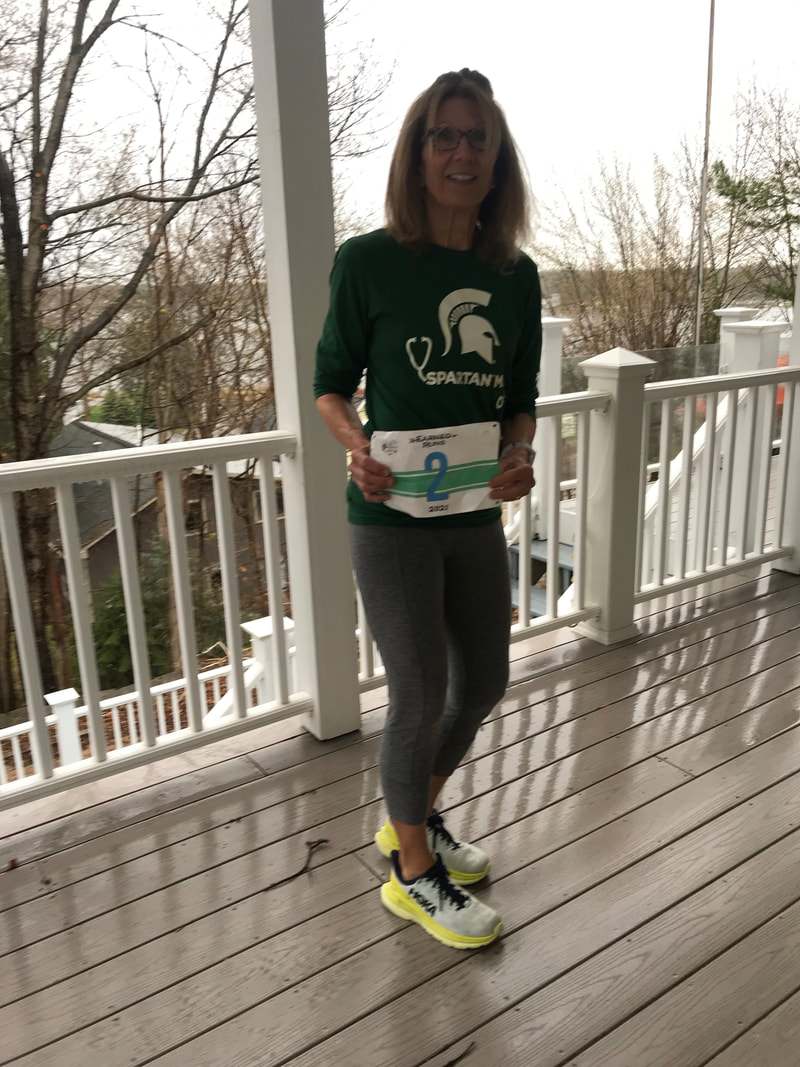
 RSS Feed
RSS Feed